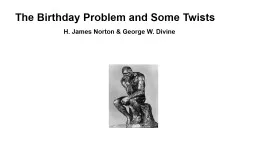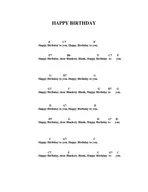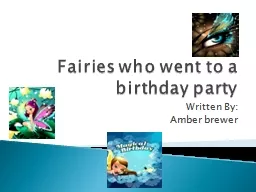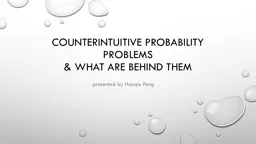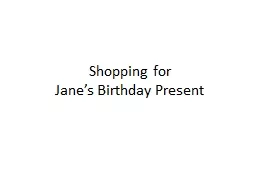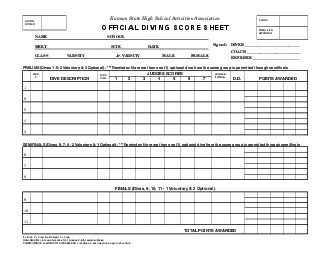PPT-The Birthday Problem and Some Twists
Author : min-jolicoeur | Published Date : 2017-10-19
H James Norton amp George W Divine What is the probability that at least two people have the same birthday day amp month in a random sample of 35 people Most
Presentation Embed Code
Download Presentation
Download Presentation The PPT/PDF document "The Birthday Problem and Some Twists" is the property of its rightful owner. Permission is granted to download and print the materials on this website for personal, non-commercial use only, and to display it on your personal computer provided you do not modify the materials and that you retain all copyright notices contained in the materials. By downloading content from our website, you accept the terms of this agreement.
The Birthday Problem and Some Twists: Transcript
Download Rules Of Document
"The Birthday Problem and Some Twists"The content belongs to its owner. You may download and print it for personal use, without modification, and keep all copyright notices. By downloading, you agree to these terms.
Related Documents

